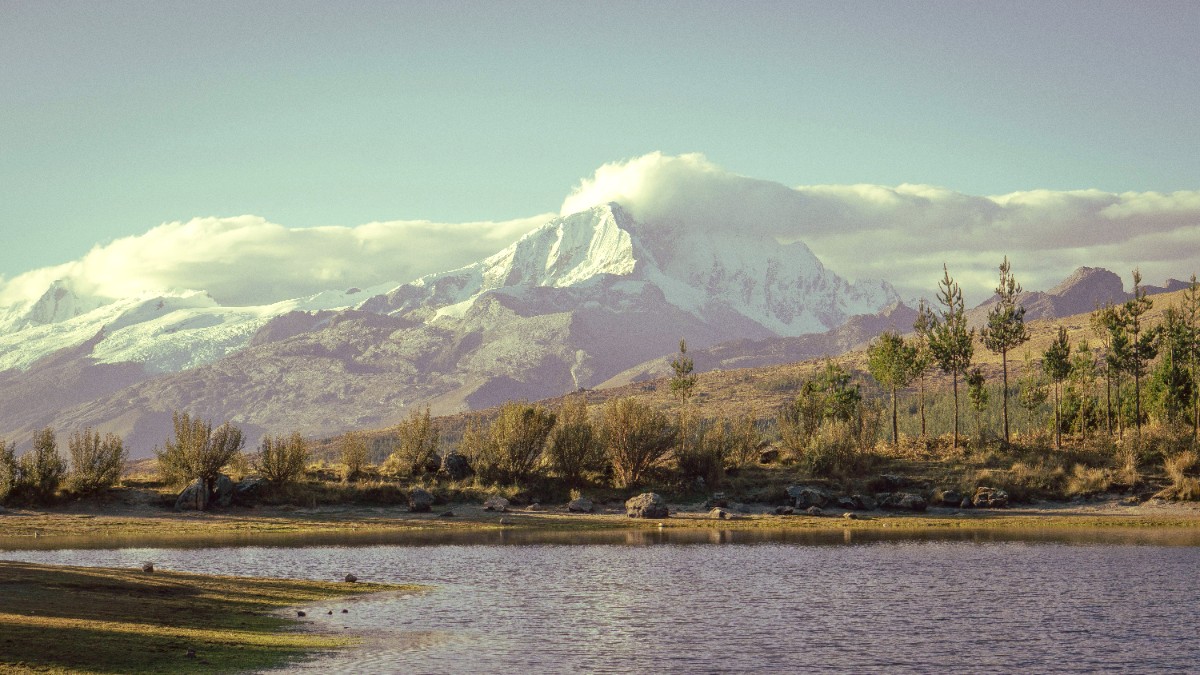
Huaraz And The Cordilleras, Peru
Huaraz's iconic landmarks combine civic spaces with remnants of its past.
Each site brings an unique perspective on the beauty and history of the Ancash region.
Museum entry fees and opening hours vary. Check locally for current information.
These stone structures, with their distinctive rectangular shape and false levels, bring a fascinating look at ancient Andean architecture and burial practices. Accessible by local Collectivo or taxi, often combined with a visit to hot springs.
This site is a remarkable example of early Andean civilization, with its intricate stone carvings, underground galleries, and the famous Lanzón monolith. A full-day organized tour is the most direct way to visit this historically significant site.
Near Jirón José Olaya, this serves as a poignant reminder of the devastating natural disaster that reshaped the city. It brings a space for reflection on the lives lost and the city's resilience.
The most compelling attractions in Huaraz are its natural wonders, found within the spectacular Huascáran National Park.
This UNESCO Biosphere Reserve is the crown jewel of the region. It protects a vast area of the Cordillera Blanca, home to high peaks, numerous glaciers, and over 600 glacial lakes. The park is a haven for unique flora and fauna. Entry has a fee.
One of Peru's most famous and stunning glacial lakes, renowned for its vivid turquoise waters set against a backdrop of snow-capped peaks and waterfalls. A strenuous but rewarding full-day hike.
The largest lake in the Cordillera Blanca, with incredibly clear, deep blue waters. It is accessible by vehicle, making it a less strenuous visit than Laguna 69, though still bringing spectacular views.
Two beautiful lakes within the Llanganuco Valley, known for their distinct green and blue hues. Easily accessible by road, they are popular stops on organized tours.
The park is home to unique high-Andean flora, including the Puya Raimondii (a giant bromeliad), and fauna like vicuñas, tarucas (Andean deer), viscachas (rabbit-like rodents), and the Andean condor.
The Cordillera Blanca itself is a geological marvel, being the highest tropical mountain range in the world. Its numerous glaciers are remnants of the last ice age, actively shaping the landscape.
Mirador de Rataquenua offers panoramic views of Huaraz and the Cordillera Blanca, especially striking at sunrise or sunset.
Pastoruri Glacier: A receding glacier that is a stark reminder of climate change. A visit means a high-altitude walk (above 5,000m / 16,400ft) to see the glacier.
Huascáran National Park brings opportunities to spot high-Andean wildlife. Look out for vicuñas and the elusive Andean condor.
Beyond the well-known sites, Huaraz has lesser-visited spots that bring tranquility and unique beauty.
From shimmering turquoise lakes fed by glaciers to ancient temples that predate the Inca, Huaraz brings a diverse range of sights.
This section outlines the must-visit landmarks, museums, and natural wonders, giving you the information to craft a rewarding sightseeing itinerary.
The Plaza de Armas, Cathedral, and Jirón José Olaya are public spaces with no entry fees for general access.
For many natural attractions and historical sites, organized tours are the most efficient way to visit.
Many natural attractions are at high altitudes. Acclimatize properly and be aware of symptoms of altitude sickness.
Explore beyond the popular spots for unique experiences.
Prepare to be amazed by the grandeur of the mountains and the echoes of ancient cultures that define Huaraz.
The highest tropical mountain range in the world, featuring over 600 glaciers and peaks, a main draw for adventurers.
Some stunning lakes, like Laguna Parón and Llanganuco Lakes, are accessible by vehicle, making them suitable for less strenuous visits.
Explore ancient archaeological sites like Willcahuain and the UNESCO-listed Chavín de Huántar, offering glimpses into early Andean civilizations.
Huascáran National Park entry has a fee. Check Section 2.2 for details on current prices and pass options.
For many high-altitude attractions and multi-day treks, local guides are advisable for safety and navigation.
Practice Leave No Trace principles to preserve the natural beauty of the park and its trails.
When visiting historical sites or local communities, be respectful of local customs and traditions.
Always ask for permission before taking photos of people, especially in local markets or villages.
Booking tickets and tours online can save time and effort, especially for popular attractions.
Many attractions around Huaraz, especially natural ones, involve physical exertion at high altitudes.
Beyond the main attractions, explore local markets for a glimpse into daily life.
Wander through residential streets away from the tourist center to observe local architecture and community interactions.
To make the most of your visit, consider combining city tours with mountain excursions, allowing time for both cultural learning and natural exploration.
The dry season (May-September) is ideal for trekking and mountain excursions, with clearer skies and less rain.
Integrate city sightseeing with a few days of acclimatization hikes before attempting more strenuous treks.
Huaraz is the undisputed capital for outdoor adventures in Peru, with options from accessible day hikes to demanding high-altitude climbs.
Always consult with local tour operators for current conditions and safety advice.
Beyond traditional trekking, Huaraz also presents various adventure sports for enthusiasts.
Bicycle rentals are available in Huaraz for self-guided exploration.
Cultural immersion is a rewarding part of the Huaraz experience, connecting you with local traditions.
Check the local calendar for events during your visit to participate in these celebrations.
Utilize platforms like GetYourGuide for convenient booking of tours and tickets to major attractions.
Consider local tour agencies in Huaraz for daily excursions, comparing services and prices.
For popular attractions and peak season, booking in advance ensures availability and peace of mind.